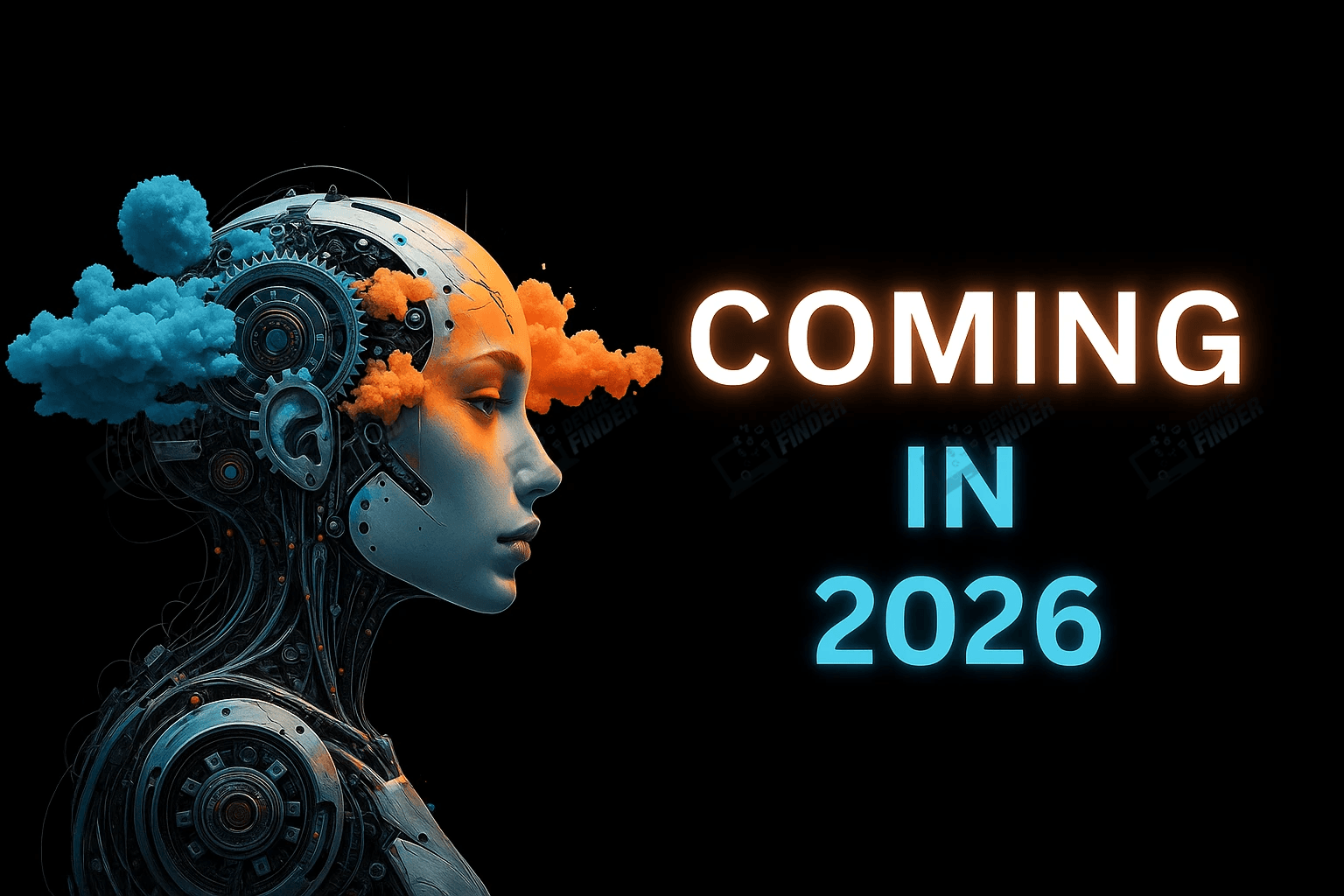
AI Technology Trends That Will Dominate 2026
AI technology is changing the game in almost every industry. By 2026, AI will touch everything from healthcare to education and business operations. It allows machines to learn, adapt, and make decisions that were once only possible for humans. Businesses and individuals can now work with AI to improve productivity, reduce errors, and streamline daily tasks. AI chatbots, virtual assistants, and smart devices are examples of AI technology improving life for everyone. Understanding AI trends is essential to prepare for the rise of AI‑powered innovations.
Why AI Technology Matters
AI is changing the game because it can perform tasks faster and more accurately than humans. Unlike traditional software, AI technology learns from data and improves over time. It can predict outcomes, recognize patterns, and make informed decisions. Companies can work with AI to automate operations, reduce costs, and create new products. In daily life, AI chatbots help customers instantly, smart devices manage homes, and AI-driven recommendations improve our digital experiences. By 2026, the rise of AI‑powered tools will become an integral part of how we live and work.
Autonomous AI Agents
Autonomous AI agents are becoming smarter every year. These AI systems can handle tasks without human input, such as scheduling, monitoring, or making purchases. For instance, an AI agent can automatically reorder office supplies when stock is low or handle routine customer service requests. AI chatbots are a key example, helping companies respond to customer queries 24/7. The rise of AI‑powered assistants allows businesses to save time and focus on more strategic tasks. By 2026, autonomous AI will be a core part of workplaces everywhere.
Generative AI Beyond Text and Images
Generative AI is no longer limited to creating text or images. By 2026, AI can generate music, videos, 3D models, and even software code. This technology enables companies to boost creativity and produce content faster. For example, designers can create fashion collections digitally, and game developers can generate realistic 3D characters automatically. AI chatbots can now even produce conversational scripts or personalized marketing content. Tools like these show how Google adds AI mode to integrate smarter assistance across platforms, helping users boost your day with AI-powered solutions.
AI in Robotics and Automation
AI in robotics allows machines to understand their surroundings and make decisions independently. Vision-language-action (VLA) models let robots analyze visual data and respond intelligently. In warehouses, robots can sort items or identify defective products. In healthcare, robotic assistants can monitor patients and assist doctors. By 2026, AI technology will enable humans to work with AI-powered robots to increase efficiency and safety in workplaces. The rise of AI‑powered automation is transforming industries globally.
AI in Healthcare
AI is changing the game in healthcare. AI technology can analyze medical images, predict diseases, and recommend treatments faster than humans. For example, AI can detect cancer from scans earlier than traditional methods. AI chatbots also help patients schedule appointments, get reminders, or answer health questions instantly. Wearable AI devices monitor vitals in real-time, allowing doctors to respond immediately to emergencies. The rise of AI‑powered healthcare tools is improving patient outcomes and making care more accessible by 2026.
AI-Powered Digital Payments and FinTech
AI is changing the game in financial services by making digital payments smarter and more secure. AI technology can detect fraud, predict spending habits, and even automate transactions. For example, AI chatbots assist users with account queries, budgeting, or investment advice. Tools like Google adds AI mode in financial platforms to make money management seamless. Businesses and individuals can boost your day with AI-powered financial solutions that reduce errors and speed up transactions. The rise of AI‑powered FinTech will reshape how people manage money.
Physical AI in Devices and IoT
Physical AI combines AI technology with tangible devices. Smart home systems, wearable devices, and AI-powered appliances can sense, learn, and act. For example, a wearable device monitors heart rate and alerts medical staff if necessary. Smart homes adjust lighting, temperature, and security automatically. Factories use AI-driven machines for assembly, inspection, and inventory management. By 2026, more people will work with AI-powered devices in homes, offices, and factories, making daily life safer, more efficient, and convenient.
AI-Powered Multimodal Systems
By 2026, AI technology will analyze multiple types of data simultaneously, including text, images, video, and audio. Multimodal AI enables smarter searches, interactive tools, and better user experiences. For example, AI chatbots can provide answers using text and related images or videos together. Google adds AI mode in its search tools to allow users to ask questions and get richer, more accurate results. These AI innovations help people boost your day with AI solutions that are more engaging and helpful.
Sovereign AI and Data Privacy
Sovereign AI is a trend ensuring that AI systems and data remain within legal boundaries. Companies can work with AI safely while complying with local privacy regulations. For instance, banks can analyze financial data without violating country-specific privacy laws. AI chatbots in customer service follow strict rules to protect personal information. By 2026, the rise of AI‑powered ethical practices will ensure data privacy and build public trust in AI technology.
AI in Education
AI technology is transforming education by creating personalized learning experiences. Adaptive AI systems identify students’ strengths and weaknesses and provide tailored lessons. Teachers can use AI chatbots to answer students’ questions or provide feedback automatically. Students can work with AI tutors to practice and learn at their own pace. By 2026, the rise of AI‑powered educational tools will improve learning outcomes, reduce teacher workload, and make education more accessible globally.
Ethical AI and Governance
As Artificial Intelligence technology spreads, ethical considerations are more important than ever. Ethical AI ensures transparency, fairness, and accountability in Artificial Intelligence-driven decisions. Companies must monitor AI chatbots and autonomous systems to avoid bias or harmful outcomes. Regulatory frameworks are emerging worldwide to guide the rise of Artificial Intelligence-powered technology responsibly. By 2026, ethical AI practices will be a key factor in public trust and adoption of Artificial Intelligence solutions.
AI for Environmental Sustainability
AI technology can improve environmental sustainability by optimizing energy usage, monitoring pollution, and managing resources efficiently. AI-powered systems can analyze climate data and suggest actionable solutions. For example, farms can use AI to determine the exact water and fertilizer requirements, reducing waste. Smart cities can use AI to control traffic and reduce emissions. By 2026, the rise of AI‑powered environmental tools will help businesses and governments achieve sustainability goals.
AI in Entertainment and Media
AI is changing the game in entertainment by creating content and personalizing user experiences. AI chatbots can interact with users, suggest content, and even co-create music or video scripts. Streaming platforms like Netflix or YouTube use AI technology to recommend shows or videos. Google adds AI mode in media apps to enhance discovery and engagement. The rise of AI‑powered content creation tools allows creators to innovate while users enjoy highly personalized entertainment.
AI in Transportation and Mobility
AI technology is revolutionizing transportation with smarter traffic management, autonomous vehicles, and optimized logistics. AI-powered systems can predict traffic delays, suggest faster routes, and manage fleets. Self-driving cars use AI chatbots for user interaction and real-time decision-making. Cities can boost your day with AI traffic controls that reduce congestion and accidents. By 2026, the rise of AI‑powered mobility solutions will make transportation safer, faster, and more efficient.
AI-Powered Security Systems
AI technology enhances both cybersecurity and physical security. AI can monitor networks, detect threats, and prevent attacks. AI chatbots can alert users about suspicious activity or account breaches. Security systems powered by AI technology can identify unusual behavior and respond automatically. By 2026, the rise of AI‑powered security tools will protect businesses, governments, and individuals from cyber and physical threats efficiently.
AI in Marketing and Business Analytics
Businesses are using AI technology to analyze data, predict trends, and automate marketing. AI chatbots interact with customers, answer questions, and provide personalized recommendations. Companies can work with AI-powered analytics tools to optimize campaigns and increase sales. Google adds AI mode in advertising platforms to provide more precise targeting and insights. By 2026, the rise of AI‑powered marketing solutions will help businesses reach customers smarter and faster.
AI in Scientific Research
AI technology accelerates research by analyzing large datasets, simulating experiments, and identifying patterns. In healthcare, AI predicts protein structures for faster drug discovery. In physics or chemistry, AI models test hypotheses without expensive trials. Scientists can work with AI chatbots to interpret results and manage data. The rise of AI‑powered research tools will reduce costs, increase accuracy, and speed up scientific breakthroughs by 2026.
AI in Smart Cities
AI technology makes cities smarter by optimizing traffic, energy, and public services. Smart sensors and AI chatbots help manage utilities and infrastructure efficiently. Google adds AI mode in urban planning tools to monitor energy use and transportation systems. Citizens can boost your day with AI-powered apps that provide real-time updates on buses, trains, or traffic. The rise of AI‑powered smart.
Frequently Asked Questions (FAQs)
Q1: How is AI changing the game?
AI is changing the game by automating tasks, boosting productivity, and improving decision-making.
Q2: What is an AI chatbot?
An AI chatbot is a virtual assistant that answers questions, provides support, and helps users quickly.
Q3: What happens when Google adds AI mode?
Google adds AI mode to offer smarter suggestions, faster responses, and AI-powered assistance.
Q4: How can I work with AI?
You can work with AI using chatbots, smart assistants, and AI tools for tasks or creativity.
Q5: How does AI boost your day?
AI boosts your day by saving time, automating work, and giving helpful insights instantly.
Q6: What is the rise of AI‑powered tools?
The rise of AI‑powered tools means more automation, smarter systems, and new ways to work and create.









